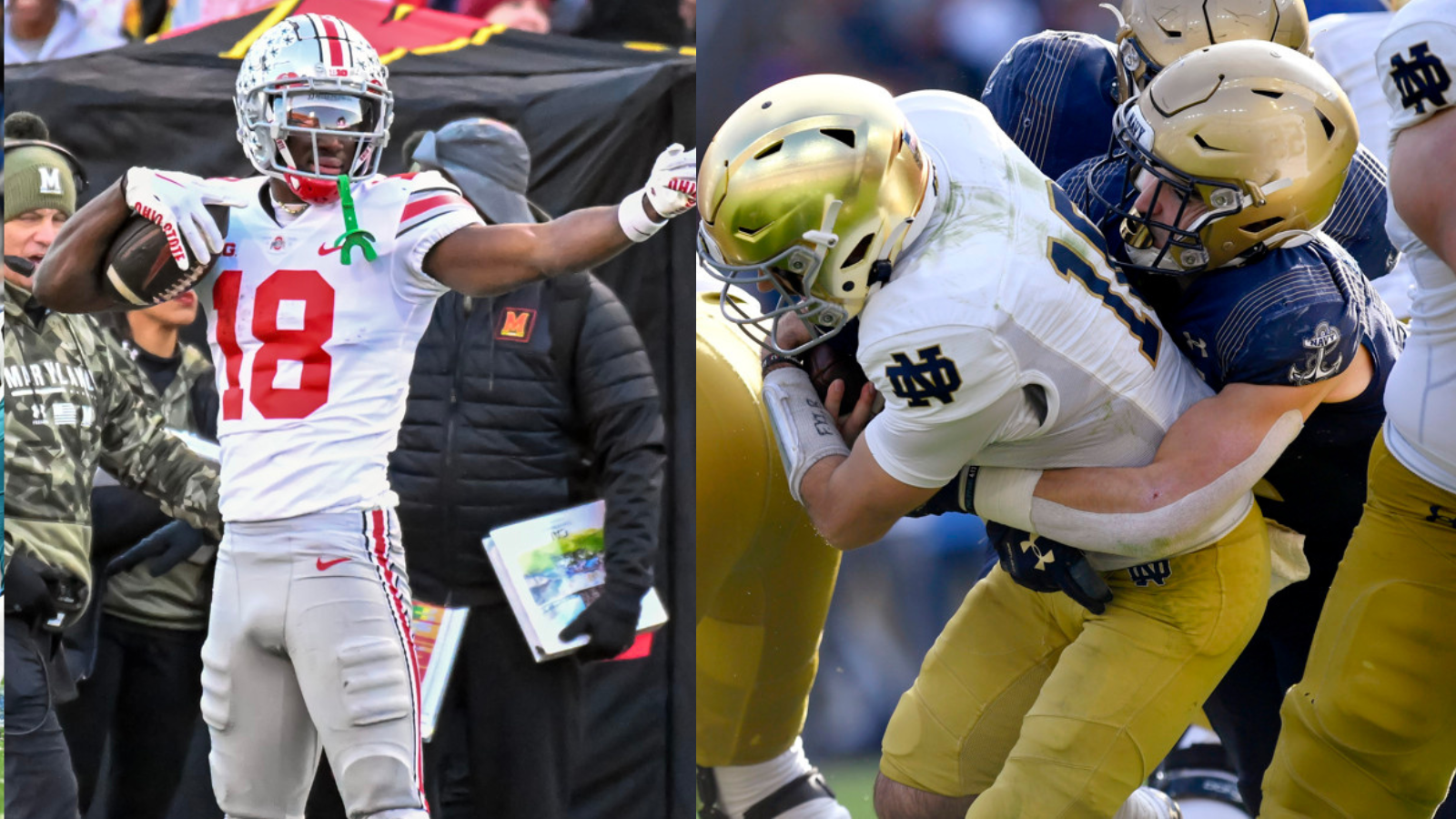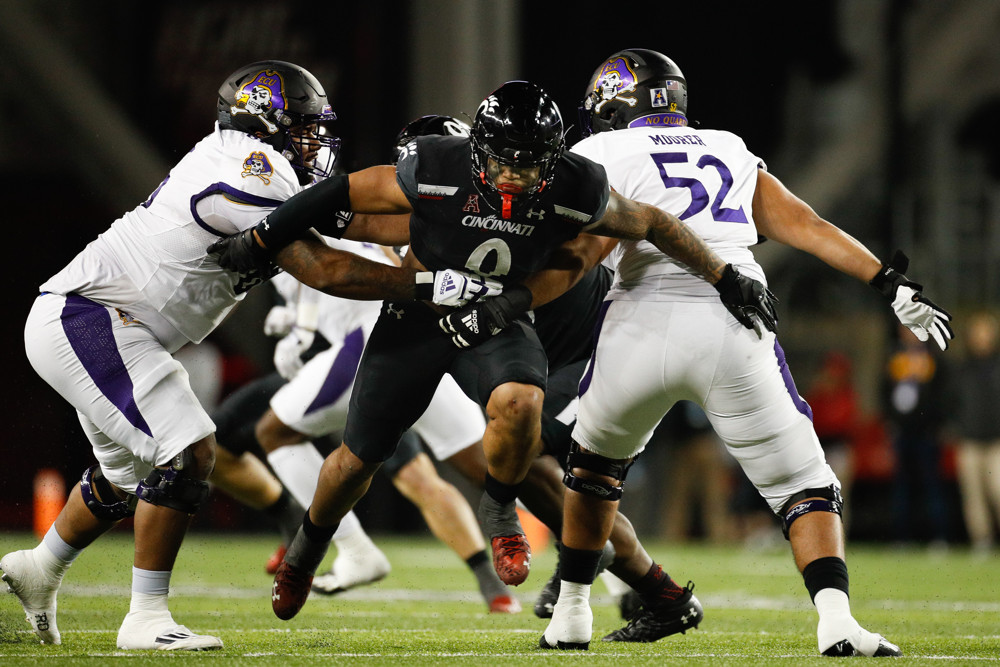As football’s popularity and professionalism have grown over the past century, so too has the centralization of power by its coaches. Descended from a time where quarterbacks called one of six plays, modern offenses contain hundreds of plays for hundreds of situations, chosen by one person hundreds of feet away. Designed and practiced over hundreds of hours, these plays detail precise instructions for all eleven players, giving such control to the coach and restriction of the players to make the Panopticon appear as free as the Garden of Eden.
With a change in dynamics comes the establishment of orthodoxy. One coach’s success results in the creation of rules and methods detailing the one true way to win. The rest of the profession falls in line, with members looking to replicate someone else’s success instead of creating their own.
Even as coaches continually fail by following the conventional wisdom, they will not change, lest they do things “the wrong way.” The paradigm can change, but only when a coach proves his way far superior to the current practices.
Enter Phil Longo, a career high school and lower division college coach who did not reach the FBS until the age of 48. The offensive coordinator for the North Carolina Tar Heels, his offense appears like any other at first glance. Labeled an Air Raid coach, his offenses feature the standard fare of four verticals, mesh, snag, and so on. But Longo’s “throw to grass” philosophy differs from nearly every other offense.
For most modern passing plays, the receivers run specific routes executed with precise spacing and timing. The quarterback, in turn, must read the defense and interpret from its look which receiver will get open and when, operating in four dimensions and forced to decide in under four seconds.
Longo’s offense inverts the decision making process, having the receivers read the defense and running to the open space on their path. The quarterback needs only to find the open area and trust that a receiver will fill the void.
With receivers, and not the play call, responsible for creating opportunities, each can diverge from the typical programming that coordinators install to get open. While vaguely reminiscent of the Run and Shoot, Longo’s offense employs slighter adjustments of stems and routes, instead of wholesale changes on the fly.
Josh Downs, a potential first-rounder come April (read my other piece this week), reads defenses phenomenally and displays how these adjustments work in practice. On curls he finds the seams between underneath defenders. On out routes he blows past the curl zone while stopping before running into the flat defender.
Longo’s philosophy lends itself to better practice as well. Contemporary passing drills train receivers and quarterbacks to follow instructions in a closed environment. This rote repetition and memorization of skills, often practiced against no defender, does not transfer to the game whatsoever, even within such planned offenses. It fails to replicate the chaos taking place on Saturdays, leaving those who practice such drills unprepared.
But an offense that emphasizes decision making in reaction to the opposition must practice in a different manner. Periods and drills must emphasize the speed and space in which the players must act in order to train the receivers to think. As a result of the offensive philosophy, practice methods invoked will more accurately represent the game.
To summarize the optimal practice philosophy as it stands today, Rob Gray stated on the Just Fly Performance podcast, “Being skillful is not about repeating the same solution to the problem, it’s about repeating coming up with solutions to problems.”
Between the obvious logic of finding space in the defense and practicing in a way representative of the actual game, Longo appears ahead of the curve. Thus far this season, North Carolina’s offensive production backs this assertion.
The Tar Heel offense scores over 40 points per game and averages .25 Total Points per play, second in the FBS. The passing offense, where the philosophy presents itself the most, ranks first in both Total Points (.49) and Expected Points (.48) per play. In Longo’s first three years, the Tar Heels ranked 9th, 2nd and 25th in Total Points per passing play as well, making this year hardly an outlier. Even before Longo arrived in Chapel Hill, his offense at Ole Miss ranked 11th in Passing Expected Points Per Play in 2018.
Even as Longo sustains his success, defenses have no answer. A look at coverages of UNC’s opponents from 2021 and 2022 show a wise increase in man coverage and a foolish increase in two-high coverages. More notable than the coverage calls, even the lowest PE Per Play values based on coverage (.27 vs Man Cover 2) would still rank in the top third of all passing attacks in Passing PE Per Play6.
Man vs Zone Coverage
| Coverage | % of Plays-2021 | PE Per Play-2021 | % of Plays-2022 | PE Per Play-2022 |
| Man | 34% | .17 | 39% | .43 |
| Zone | 66% | .29 | 61% | .47 |
Middle of Field Open vs Closed
| Coverage | % of Plays-2021 | PE Per Play-2021 | % of Plays-2022 | PE Per Play-2022 |
| MOFO | 56% | .18 | 47% | .38 |
| MOFC | 44% | .33 | 53% | .52 |
Specific Coverages
| Coverage | % of Plays-2021 | PE Per Play-2021 | % of Plays-2022 | PE Per Play-2022 |
| Cover 0 | 4% | .21 | 11% | .60 |
| Cover 1 | 25% | .19 | 21% | .40 |
| Man Cover 2 | 6% | .05 | 7% | .27 |
| Cover 2 | 4% | .34 | 13% | .70 |
| Cover 3 | 31% | .18 | 26% | .37 |
| Cover 4 | 31% | .40 | 22% | .46 |
But even attempting to adjust the coverage based on one year of data looks more foolish.
A data set of all ACC offenses since 2019 with the same coordinator in consecutive years produces the following correlations of defensive coverage calls and offensive production against certain coverages.
R2 of Coverages Called and Performance Against Them
| Coverage Split | Coverage Called Percentage | PE Per Play |
| Man vs Zone | .28 | .12 |
| MOFO vs MOFC | .05 | .13 |
| Specific Coverages | .84 | .07 |
| Specific Coverages (min. 50) | .02 | .19 |
On a macro scale, defenses display opponent-dependent trends in whether they call man or zone, but offenses have little ability to perform better compared to the other year-to-year. Defenses show less of a tendency when it comes to open and closed coverages, and offenses appear similarly incapable of sustained performance here as they do against man and zone. The R2 for calling certain coverages looks strong at first, but filtering for little-used coverages by each defense, primarily Cover 0, 2, and Man Cover 2, shows that defenses seldom call coverages according to their opponent’s weaknesses. The replication of performance against each, however, increases slightly.
Straying from the conventional wisdom, Longo has created an offense that takes advantage of the philosophical flaws in modern defense. With his system, his offense prepares and performs better than any other. Short of a change in general defensive strategy or preparation, Longo will continue to reside on the bleeding edge of offensive football.



